Permaculture companion plants for Potato
| Image | Name | Data | Description | Actions |
|---|---|---|---|---|
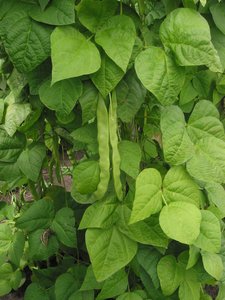
|
Common bean |
2-11
Annual
Full sun
Moist
Light (sandy), Medium, Heavy (clay)
2.0
Vines
Biomass, Dye, antifungal, Nitrogen fixer
true
Leaves, Seed, Seedpod
Seed - transplant, Seed - direct sow
https://en.wikipedia.org/wiki/Phaseolus_vulgaris
Pole bean, Climbing bean, French bean, Bush bean, Dwarf bean, Kidney bean, Green bean
Fabaceae, Leguminosae
Stangenbohne
https://pfaf.org/User/Plant.aspx?LatinName=Phaseolus vulgaris
16-18°c (70-80°f)
6.0-6.8
2.5 cm
16cm
4-10 days
45-85
Fast
Sperzieboon
Costa Rica, Guatemala, Honduras, Mexico Central, Mexico Gulf, Mexico Northeast, Mexico Northwest, Mexico Southeast, Mexico Southwest, Nicaragua, Panamá
Altay, Amur, Andaman Is., Angola, Argentina Northeast, Argentina Northwest, Assam, Baltic States, Bangladesh, Belarus, Bolivia, Bulgaria, Buryatiya, Cameroon, Cayman Is., Central European Rus, Chad, Chita, Colombia, Comoros, Cuba, Czechoslovakia, Dominican Republic, East European Russia, East Himalaya, Ecuador, Ethiopia, Guinea, Gulf of Guinea Is., Haiti, Illinois, India, Iraq, Irkutsk, Jamaica, Jawa, Kazakhstan, Kenya, Khabarovsk, Kirgizstan, Korea, Krasnoyarsk, Kuril Is., Leeward Is., Malaya, Marianas, Maryland, Mongolia, Myanmar, Nepal, New Guinea, New York, Nicobar Is., Nigeria, North Caucasus, North European Russi, Northwest European R, Pakistan, Peru, Philippines, Primorye, Puerto Rico, Queensland, Rwanda, Sakhalin, Senegal, South European Russi, Sri Lanka, Tadzhikistan, Tanzania, Thailand, Togo, Transcaucasus, Trinidad-Tobago, Turkmenistan, Tuva, Uganda, Ukraine, Uzbekistan, Venezuela, Vietnam, Wake I., West Himalaya, West Siberia, Yakutskiya, Zambia, Zaïre
2-4 weeks before last frost
1 week after last frost, 12-14 weeks before first frost
3-5 years
0.4
https://powo.science.kew.org/taxon/urn:lsid:ipni.org:names:514191-1
Coffee, Condiment
|
This entry describes all varieties of the common bean. This includes vining and bush/darf variaties and can have different names depending on their style of growths (see alternate names). These include the kidney bean, the navy bean, the pinto bean, the French bean and the wax bean The common bean, scientific name Phaseolus vulgaris, is a herbaceous annual plant native to the Americas, specifically the regions extending from the southwestern United States to South America. It is a member of the Fabaceae (legume) family. The common bean has a range of different appearances, depending on the variety. Most varieties have a simple, erect stem that grows to a height of 20-60 cm. The leaves are typically green and consist of 3-5 oblong leaflets. The flowers are small and white, pink, or purple in color. The fruit is a legume, which contains the seeds. The common bean is typically a small plant, but some varieties can grow to be quite large, reaching heights of up to 2 meters. The plant grows relatively quickly, with the growing season typically lasting between 60-100 days. The common bean prefers well-drained soil and full sun, but can also grow in partial shade. It is sensitive to frost and should be planted after the last frost date in the spring. To cultivate the common bean successfully, a grower may need to ensure that the soil is adequately fertilized and provide support for the plant to climb, if necessary. The common bean is edible, with the seeds and the young pods being the most commonly consumed parts. The seeds can be cooked and eaten as a protein-rich vegetable, and the young pods can be eaten as a green vegetable. The edible parts can be stored after harvest by drying the seeds or by preserving the young pods in vinegar or oil. The common bean has many uses beyond being a food source. The plant can fix nitrogen in the soil, improving its fertility and making it a useful companion plant for other crops. The dried leaves and stems of the common bean can be used as mulch or as a source of organic matter. In some cultures, the fibers from the stems are used to make ropes or other weaving materials. Additionally, the plant has been used medicinally to treat a variety of ailments. The common bean is also valuable for wildlife. The flowers attract bees and other pollinators, and the plant provides food for a variety of insects, birds, and small mammals. ### Links [Beans Seed Starting Tips @ Harvest to Table](https://harvesttotable.com/beans-seed-starting-tips/) ### Propagation - direct sow Direct-sow beans in spring after all danger of frost has passed and soil is at least 16°C (60°F). In warm-winter regions, sow beans in late summer for harvest in winter. Time sowing so that beans come to harvest before the first frost. |
Show
Edit |

|
Runner Bean |
1-12
Annual, Perennial
Full sun
Moist
Light (sandy), Medium, Heavy (clay)
3.0
true
Flowers, Leaves, Root, Seed, Seedpod
https://en.wikipedia.org/wiki/Phaseolus_coccineus
Fast
Scarlet runner, scarlet runner bean, scarlet conqueror, fire bean, mammoth, red giant phaseolus coccineus ssppolyanthus (cache bean)
Fabaceae or leguminosae
https://pfaf.org/User/Plant.aspx?LatinName=Phaseolus coccineus
Guatemala, Honduras, Mexico Central, Mexico Gulf, Mexico Northeast, Mexico Northwest, Mexico Southeast, Mexico Southwest, Nicaragua, Panamá
Alabama, Amur, Assam, Baltic States, Bangladesh, Belarus, Bulgaria, Central European Rus, China North-Central, China South-Central, China Southeast, Colombia, Czechoslovakia, East European Russia, East Himalaya, Ecuador, Ethiopia, India, Inner Mongolia, Jawa, Kenya, Khabarovsk, Kirgizstan, Korea, Manchuria, Nepal, New Guinea, New Zealand North, New Zealand South, North European Russi, Northwest European R, Pakistan, Primorye, Rwanda, South European Russi, Tanzania, Transcaucasus, Ukraine, Uzbekistan, Wake I., West Himalaya
3-5 years
https://powo.science.kew.org/taxon/urn:lsid:ipni.org:names:513754-1
Nitrogen fixer
|
Show
Edit |
|
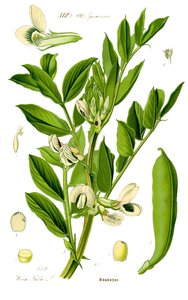
|
Broad Bean |
4-8
Full sun, Partial sun/shade
Moist
Light (sandy), Medium, Heavy (clay)
6.0-6.8
1.0
0.3
Annual
Fast
20cm
Seed - direct sow, Seed - transplant
6 weeks after sowing them in pots
6 weeks after sowing them in pots
21 days
3-5 years
Nitrogen fixer
Leaves, Seed
fava bean, faba bean, Broad bean, or faba bean Varieties with smaller, harder seeds that are fed to horses or other animals are called field bean, tic bean or tick bean Horse bean
Ackerbohne
Fabaceae or Leguminosae
Afghanistan, Iran
Albania, Algeria, Altay, Angola, Argentina South, Assam, Baleares, Bangladesh, Bolivia, Bulgaria, Cameroon, Canary Is., Central European Rus, Chad, China North-Central, China South-Central, China Southeast, Colombia, Corse, Cuba, Cyprus, Czechoslovakia, Dominican Republic, East Aegean Is., East European Russia, Ecuador, Ethiopia, France, Guatemala, India, Iraq, Italy, Jawa, Kenya, Krym, Lebanon-Syria, Leeward Is., Libya, Madeira, Mexico Southwest, Mongolia, Morocco, Myanmar, Nepal, New South Wales, New York, New Zealand North, New Zealand South, Pakistan, Peru, Portugal, Puerto Rico, Rwanda, Sardegna, Sicilia, Spain, Sri Lanka, Sudan, Tibet, Tunisia, Turkey, Turkey-in-Europe, Uruguay, Vermont, Vietnam, West Himalaya, Yemen, Yugoslavia
https://en.wikipedia.org/wiki/Vicia_faba
https://pfaf.org/User/Plant.aspx?LatinName=Vicia faba major
https://powo.science.kew.org/taxon/urn:lsid:ipni.org:names:524737-1
Feb-April; Oct-Nov
sow in deep pots in cool, frost-free place
|
Broad bean (Vicia faba), also known as fava bean or faba bean, is a type of legume that is native to North Africa and the Middle East. It is a popular garden plant, known for its edible beans and attractive purple or white flowers. Broad bean plants have a upright, bushy growth habit and can reach a height of up to 3 feet. The leaves are large and composed of three oval-shaped leaflets, and the flowers are small and clustered in groups of two or three. The beans are produced in long, slender pods that contain two or three beans each. To grow broad beans successfully, it is important to choose a location with well-drained, fertile soil and full sun. The plants should be spaced about 8-12 inches apart, and watered regularly to ensure that the soil stays moist but not waterlogged. Broad beans are generally easy to grow and require little maintenance, but they can be susceptible to pests and diseases, such as aphids and fungal infections. Grows best in temperatures ranging from 60° to 65°F (15-18°C) but will tolerate a range from 40°F (4.4°C) - 75°F (24°C). Broad beans are edible, and the beans can be eaten fresh or frozen, canned or dried for storage. To harvest the beans, the pods should be picked when they are plump and before the beans inside begin to harden. The beans can be removed from the pods by gently squeezing them out. Fresh beans can be stored in the refrigerator for a few days, while dried beans can be stored in an airtight container for several months. In addition to their culinary uses, broad beans also have a number of medicinal properties, and have been used to treat a variety of ailments, including asthma, bronchitis, and anemia. Broad beans are also a valuable food source for many types of wildlife, including birds, insects, and small mammals. The plants provide nectar for bees and other pollinators, and the beans are a popular food for many species of birds. |
Show
Edit |
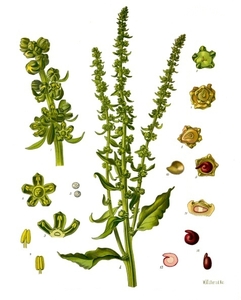
|
Beet |
4-8
Biennial
Full sun
Moist
Light (sandy), Medium, Heavy (clay)
Deciduous
0.9
True
Leaves, Root
Seed - direct sow, Seed - transplant
2 weeks before last frost
https://en.wikipedia.org/wiki/beta_vulgaris
Chenopodiaceae
Rübe
https://pfaf.org/user/plant.aspx?latinname=beta vulgaris craca
6.0-6.8
10°c (50°f)
5-12 days
1.5 cm
20cm
45-65
Beta vulgaris subsp. vulgaris Conditiva Group, beetroot
6-8 weeks before last frost
2-3 weeks before last frost, 6-8 weeks before the first frost
2-3 years
0.25
|
Beet (Beta vulgaris vulgaris), also known as garden beet, red beet, or table beet, is a plant that is native to the Mediterranean region. It is a biennial plant that typically grows to a height of 0.5-1.5 feet and has dark green leaves that are long and rounded, with a smooth or slightly hairy texture. The stem is usually light green in color, and the plant produces small, white or yellow flowers. Beet plants grow best in well-drained soil that is rich in organic matter, and they prefer full sun to partial shade. To cultivate beets successfully, a grower will need to keep the soil moist and weed-free, and may need to thin the plants to allow for proper growth. Beets are edible, and the most commonly eaten part of the plant is the root, which is typically red or purple in color. The leaves of the plant can also be eaten, and are often used in salads. Beets can be stored after harvest by washing and trimming the roots, and then storing them in a cool, dark place. Beets have a number of uses, both culinary and non-culinary. In the kitchen, beets can be cooked in a variety of ways, including boiling, roasting, and grilling. They can also be used to add color and flavor to salads, soups, and stews. In addition to their culinary uses, beets have a number of medicinal properties and have been used to treat a variety of ailments, including indigestion, constipation, and inflammation. Beets are also valuable for their ability to improve soil fertility, as their leaves and roots contain high levels of nitrogen and other nutrients. They can be used as a natural fertilizer, and can also be used as a mulch or as a ground cover to help control weeds. Beets are not particularly attractive to wildlife, but they can provide food for a variety of animals, including deer, rabbits, and birds. Overall, beets are a versatile and valuable plant that is widely cultivated by gardeners and farmers for their edible roots and leaves, as well as for their potential uses in medicine and agriculture. ### Links [How to Grow Beets @ Harvest to Table](https://harvesttotable.com/how_to_grow_beets/) |
Show
Edit |

|
Zea mays |
2-11
Full sun
Moist
Light (sandy), Medium, Heavy (clay)
2
0.66
Annual
Fast
true
Pollen, Seed, Stem
Oil, Coffee
Maize, corn, abado, able, aburow, agbado, awasi, awi, bara-jowar, bhutta, blefo, bli, buta, chujak, goinjol, gomdhan, igbado, jagung, janar, jonar, junri, kaaba, keto, kolkoti, kon, kono, kukri, maka, makai, makka jonnalu, makka-cholam, makka, makkai, makkari, makoi, masara agwado, massara, mekkejola, milho, mokka-janna, musukojola, naham, nyo, oka, oksusu, shaa, sil ni vavalagi, ta-mank, yu shu shu, ai, amylum maydis, awási, aya, corn oi, 6 corn oil (unhydrogenated), corn silk, corn starch, corn syrup solids, corn|iringu, dent corn, dura shami, field corn, flint corn, gangnaengi, granoturco, indian corn, maidis stigma, mais, maiz, aceite, maize oil, refined, maize starch, majs, maydis amylum, maydis oleum raffinatum, maydis stigma, maíz, aceite refinado, maîs, maïs, ogsusu, oleum maydis, pelos de elafe, pod corn, popcorn, refined maize oil, risoy genime sami, stigmata maidis, styli cum stigmatis zeae maydis, sweet corn, topical starch, to-morokoshi, yu mi shu, yu mi xu, zein, zorrat
Mais
Poaceae or gramineae
Guatemala, Mexico Central, Mexico Southwest
Afghanistan, Alabama, Albania, Aldabra, Algeria, Amur, Andaman Is., Angola, Argentina Northeast, Arizona, Arkansas, Aruba, Assam, Austria, Azores, Bahamas, Baleares, Baltic States, Bangladesh, Belarus, Belgium, Belize, Benin, Bismarck Archipelago, Bolivia, Borneo, Brazil North, Brazil Northeast, Brazil South, Brazil Southeast, Brazil West-Central, Bulgaria, Burkina, Burundi, California, Cambodia, Cameroon, Canary Is., Caroline Is., Cayman Is., Central African Repu, Central European Rus, Chad, Chagos Archipelago, China North-Central, China South-Central, China Southeast, Christmas I., Colombia, Colorado, Comoros, Connecticut, Corse, Costa Rica, Cuba, Cyprus, Czechoslovakia, Djibouti, Dominican Republic, East European Russia, East Himalaya, Ecuador, Egypt, Equatorial Guinea, Ethiopia, Fiji, Florida, France, French Guiana, Galápagos, Gambia, Georgia, Germany, Ghana, Great Britain, Greece, Guinea, Guinea-Bissau, Gulf of Guinea Is., Hainan, Haiti, Hawaii, Honduras, Hungary, Idaho, Illinois, India, Indiana, Iowa, Iraq, Ireland, Italy, Ivory Coast, Jamaica, Japan, Jawa, Kansas, Kazakhstan, Kentucky, Khabarovsk, Kirgizstan, Korea, Kriti, Krym, Laos, Leeward Is., Lesser Sunda Is., Louisiana, Madagascar, Maine, Malaya, Mali, Maluku, Manchuria, Marianas, Marshall Is., Maryland, Massachusetts, Mauritius, Mexico Gulf, Mexico Northeast, Mexico Northwest, Mexico Southeast, Minnesota, Mississippi, Missouri, Montana, Morocco, Mozambique, Myanmar, Nansei-shoto, Nebraska, Nepal, Netherlands, Netherlands Antilles, Nevada, New Caledonia, New Guinea, New Hampshire, New Jersey, New Mexico, New York, Nicaragua, Niger, Nigeria, Niue, North Carolina, North Caucasus, Northwest European R, Ohio, Oman, Ontario, Oregon, Pakistan, Panamá, Pennsylvania, Peru, Philippines, Pitcairn Is., Poland, Portugal, Primorye, Puerto Rico, Queensland, Québec, Rhode I., Rodrigues, Romania, Rwanda, Réunion, Sakhalin, Samoa, Sardegna, Seychelles, Sicilia, Sierra Leone, Somalia, South Carolina, South European Russi, Spain, Sri Lanka, Sudan, Switzerland, Tadzhikistan, Tanzania, Tennessee, Texas, Thailand, Togo, Transcaucasus, Trinidad-Tobago, Tunisia, Turkey, Turkey-in-Europe, Turkmenistan, Ukraine, Uruguay, Utah, Uzbekistan, Vanuatu, Venezuelan Antilles, Vermont, Vietnam, Virginia, Wake I., Washington, West Himalaya, West Virginia, Western Australia, Windward Is., Wisconsin, Wyoming, Yemen, Yugoslavia, Zambia, Zaïre
https://en.wikipedia.org/wiki/Maize
https://pfaf.org/User/Plant.aspx?LatinName=Zea mays
https://powo.science.kew.org/taxon/urn:lsid:ipni.org:names:426810-1
Adhesive, Fire starter, oil, textiles
|
Corn (Zea mays) is a plant native to Central America and Mexico. It is a tall plant with a sturdy stem and large leaves that grow in a spiral pattern around the stem. The plant produces large, brightly colored flowers that give way to ears of corn. The ears are typically yellow, but can also be white, red, or blue. Corn grows to be anywhere from 3-12 feet tall and can grow quickly, depending on the variety. To differentiate corn from similar plants, gardeners and farmers can look for the spiral pattern of the leaves and the presence of ears. Corn is often grown in rows, which can also help to distinguish it from other plants. Corn prefers well-draining, fertile soil and full sun. In order to cultivate it successfully, a grower will need to provide these conditions and also ensure that the plants receive adequate water. Corn is often grown from seed, which should be planted in the ground when the soil has warmed to at least 60 degrees Fahrenheit. Corn is edible, and the edible parts are the kernels that are found on the ears. The ears can be harvested when the kernels are plump and fully developed. They can be stored after harvest by drying them in the sun or by freezing them. Corn has many uses. In addition to being a popular food crop, it can also be used as livestock feed and as a source of biofuel. It can also be used as a building material and for crafting. Corn has medicinal properties and has been used to treat a variety of ailments. It is also valued by wildlife, as it provides food and shelter for birds, small mammals, and insects. |
Show
Edit |
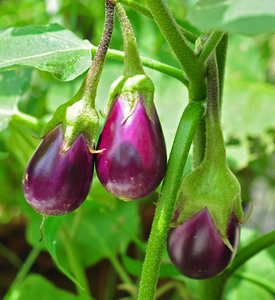
|
Solanum melongena |
8-11
Full sun
Moist
Light (sandy), Medium, Heavy (clay)
1.0
1
Perennial
true
Fruit, Leaves
Eggplant
Aubergine
Solanaceae
China South-Central, Laos, Malaya, Myanmar, Thailand, Vietnam
Assam, Bangladesh, Cambodia, East Himalaya, India, Kazakhstan, Laccadive Is., Sri Lanka, Tadzhikistan, Turkmenistan, Uzbekistan, Zaïre
https://en.wikipedia.org/wiki/Eggplant
https://pfaf.org/User/Plant.aspx?LatinName=Solanum melongena
https://powo.science.kew.org/taxon/urn:lsid:ipni.org:names:820053-1
|
The eggplant, also known as Solanum melongena, is a plant that is native to India and Southeast Asia. It is typically an annual plant. It is a member of the nightshade family and is closely related to other vegetables such as tomatoes and peppers. Eggplants are typically recognized by their deep purple, spongy fruit, but they can come in a variety of sizes and colors (white, green, black, purple striped). The fruit is elongated and cylindrical in shape, and can grow to be anywhere from 6-12 inches in length. The leaves of the eggplant are broad and dark green in color, and the plant itself can grow to be quite tall, reaching heights of 3-4 feet. Eggplants prefer warm, sunny growing conditions and can be grown in a wide range of soils as long as they are well-draining. They are typically grown as a summer crop, and will begin to produce fruit around 2-3 months after planting. To cultivate eggplants successfully, a grower will need to provide the plants with adequate water and nutrients, and may need to use stakes or other supports to help the plant grow upright. Eggplants are not winter hardy and will not survive freezing temperatures. The fruit of the eggplant is edible and is often used in a variety of dishes, particularly in Mediterranean and Asian cuisines. It can be sliced and fried, grilled, or used in stews and soups. The skin of the fruit is typically removed before eating, and the flesh can be stored in the refrigerator for a few days after harvesting. In addition to being used as a food source, eggplants have also been used for medicinal purposes in some cultures. The plant is believed to have anti-inflammatory properties, and has been used to treat a variety of ailments including headache and rheumatism. It is also sometimes used as a natural insect repellent. |
Show
Edit |
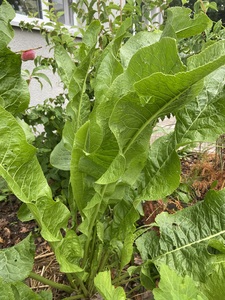
|
Horseradish |
4-9
Full sun, Partial sun/shade
Moist
Light (sandy), Medium, Heavy (clay)
5.5-7.0
Deciduous
0.7-1.5m
1
Perennial
Herbs
Fast
20cm (8″) / 40-50cm (16-20″)
Seed - transplant, Seed - direct sow, Division
2-4 weeks before last frost
8-12 weeks before last frost
At last frost date
7-25 days
7-23°c (45-75°f)
55
3 to 7 years
antifungal
true
Leaves, Root, Seed
Red cole, Cochlearia armoracia
Meerrettich
Mierik, Mierikswortel
Peberrod
Brassicaceae
Europe, South European Russi, Ukraine
Albania, Altay, Austria, Baltic States, Belarus, Belgium, British Columbia, Bulgaria, Buryatiya, California, Central European Rus, China North-Central, China Southeast, Colorado, Connecticut, Czechoslovakia, Denmark, East European Russia, Finland, France, Germany, Great Britain, Hungary, Idaho, Illinois, Indiana, Iowa, Ireland, Italy, Jamaica, Japan, Kamchatka, Kazakhstan, Kentucky, Kirgizstan, Korea, Krasnoyarsk, Maine, Manchuria, Manitoba, Marianas, Maryland, Massachusetts, Michigan, Minnesota, Missouri, Montana, Nebraska, Netherlands, New Brunswick, New Hampshire, New Jersey, New Mexico, New York, New Zealand North, New Zealand South, North Carolina, North Caucasus, North Dakota, North European Russi, Northwest European R, Norway, Nova Scotia, Ohio, Ontario, Oregon, Pennsylvania, Poland, Primorye, Prince Edward I., Québec, Rhode I., Romania, Sakhalin, Saskatchewan, Sicilia, South Dakota, Spain, Sweden, Switzerland, Tadzhikistan, Tennessee, Transcaucasus, Turkey, Turkey-in-Europe, Tuva, Utah, Uzbekistan, Vermont, Virginia, Washington, West Virginia, Wisconsin, Wyoming, Yugoslavia
True
https://en.wikipedia.org/wiki/Horseradish
https://pfaf.org/User/Plant.aspx?LatinName=Armoracia rusticana
https://powo.science.kew.org/taxon/urn:lsid:ipni.org:names:278747-1
Tap
60cm
8-12 weeks before last frost
True
Roots
Condiment
|
Horseradish (Armoracia rusticana) is a perennial plant native to southeastern Europe and western Asia. It is a member of the Brassicaceae family, which includes other plants such as mustard and cabbage. The plant has large, dark green leaves and a white, elongated root. It grows to about 1-1.5 meters tall and has small white flowers that bloom in the spring. Horseradish is often grown for its large, white, pungent root, which is used as a condiment. The root can grow quite large and can be up to 1.5 meters in length. It is typically harvested in the fall, after the plant has been growing for at least two years. Horseradish prefers well-draining soil and full sun, and can be grown successfully in a wide range of climates. To cultivate horseradish, a grower can plant the root in the spring and keep the soil consistently moist. Once the plant is established, it can be harvested by carefully digging up the root and removing the leaves. The root of the horseradish plant is edible and is typically grated and used as a condiment. It has a strong, pungent flavor that is often used to add a spicy kick to dishes. The root can be stored in the refrigerator for several weeks, or it can be preserved by pickling or canning. Horseradish has a number of uses beyond its use as a condiment. It is sometimes used medicinally to treat respiratory conditions, and the leaves can be used as a natural insect repellent. The plant can also be used as a natural fertilizer or as a natural deterrent to pests. It is not known to be particularly valuable to wildlife. ## Propagation While it is possible to grow from seed, the way more easy method is division. Divison can be done all year but best in spring. |
Show
Edit |

|
Marjoram |
6-9
Perennial
Full sun, Partial sun/shade
Dry, Moist
Light (sandy), Medium, Heavy (clay)
0.6
Herbs
true
Leaves
https://en.wikipedia.org/wiki/Marjoram
Lamiaceae or labiatae
Majoran
https://pfaf.org/User/Plant.aspx?LatinName=Origanum majorana
Cyprus, Turkey
Algeria, Azores, Baleares, Baltic States, Corse, Czechoslovakia, Great Britain, Greece, India, Italy, Juan Fernández Is., Krym, Libya, Madeira, Morocco, Spain, Switzerland, Tunisia, Ukraine, Venezuela, Yugoslavia
https://powo.science.kew.org/taxon/urn:lsid:ipni.org:names:453303-1
Condiment, Tea
Disinfectant, Dye, Essential Oil, Fragrance
|
Marjoram (Origanum majorana) is a herbaceous plant that is native to the Mediterranean region. It has delicate, oval-shaped leaves that are pale green in color, and small white or pink flowers that grow in clusters. The plant grows to a height of about 30 cm and has a woody stem. In terms of growing conditions, marjoram prefers well-drained, light soil and full sun to partial shade. It can be grown from seeds or cuttings, and should be spaced about 30 cm apart. Marjoram is winter hardy in mild climates, but may need to be protected or brought indoors in colder regions. Marjoram has a number of culinary uses. It is often used as a flavoring in soups, stews, and sauces, and can be added to salads and other dishes as a garnish. The leaves and flowers of the plant are edible and can be used fresh or dried. When harvesting marjoram, it is best to pick the leaves early in the morning when they are at their most flavorful. The leaves can be stored in an airtight container in a cool, dark place for up to six months. In addition to its culinary uses, marjoram has also been used medicinally as an antiseptic and as a remedy for digestive problems. It is also sometimes used in perfumes and soaps. Marjoram is not particularly attractive to wildlife, but it can provide habitat for some beneficial insects such as bees and butterflies. |
Show
Edit |
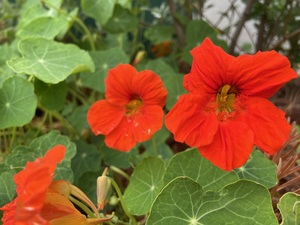
|
Nasturtium |
6-11
Full sun
Moist
Light (sandy), Medium
3.5
1
Annual, Perennial
Ground cover, Herbs
Fast
15cm
Seed - direct sow, Seed - transplant
1 week after last frost - late spring
2-4 weeks before last frost
2 weeks after last frost
7-12 days
12-18°C (55-65°F)
Pest control, oil, Fragrance
Flowers, Leaves, Seed, Seedpod
Oil, Condiment
Tropaeolum, Indian Cress
Große Kapuzinerkresse
Tropaeolaceae
Peru
Albania, Algeria, Amsterdam-St.Paul Is, Angola, Argentina Northeast, Ascension, Assam, Azores, Baleares, Bangladesh, Belgium, Bermuda, Bolivia, Brazil South, Brazil Southeast, Bulgaria, California, Cameroon, Canary Is., Cape Verde, Central European Rus, Chile Central, China South-Central, Colombia, Connecticut, Costa Rica, Cuba, Czechoslovakia, Dominican Republic, East Aegean Is., East Himalaya, Ecuador, El Salvador, Eritrea, Ethiopia, France, Free State, Great Britain, Greece, Guatemala, Haiti, Hawaii, Honduras, Jamaica, Juan Fernández Is., Korea, Kriti, Lebanon-Syria, Madeira, Massachusetts, Mauritius, Mexico Central, Mexico Northwest, Morocco, New Hampshire, New York, New Zealand North, New Zealand South, Norfolk Is., North European Russi, Oregon, Pennsylvania, Puerto Rico, Romania, Rwanda, Réunion, South European Russi, Spain, St.Helena, Tasmania, Tibet, Trinidad-Tobago, Tristan da Cunha, Tunisia, Uruguay, Vietnam, Zaïre
https://en.wikipedia.org/wiki/Tropaeolum_majus
https://pfaf.org/User/Plant.aspx?LatinName=Tropaeolum majus
https://powo.science.kew.org/taxon/urn:lsid:ipni.org:names:310974-2
true
|
Tropaeolum majus, commonly known as garden nasturtium, is a flowering plant that is native to South and Central America and can be grown annually as well as perennially. It belongs to the family Tropaeolaceae, which includes around 80 species of plants. T. majus is a popular garden plant, known for its bright, colorful flowers and attractive foliage. The flowers are typically yellow, orange, or red and have a distinctive, trumpet-like shape. The leaves are rounded and have a slightly waxy texture, and the plant produces long, trailing stems that can be used to create a cascading effect in hanging baskets or other containers. To grow T. majus, it is best to start the seeds directly in the ground or in pots after the last frost has passed. The plant prefers well-drained soil and full sun, but can also tolerate partial shade. It is important to water the plants regularly, but avoid overwatering, as this can cause the leaves to rot. T. majus can also be grown in containers and trained to climb trellises or other structures. In addition to its ornamental value, T. majus is also edible. The leaves, flowers, and seeds can be used in salads and other dishes, adding a slightly spicy, peppery flavor. The plant has also been used medicinally, as the leaves and seeds contain compounds with antibacterial and antioxidant properties. T. majus has been used to treat a variety of ailments, including respiratory infections and digestive disorders. It has also been used as a natural remedy for urinary tract infections and kidney stones. However, T. majus should be used with caution, as it can cause allergic reactions in some people. Additionally, T. majus can become invasive if allowed to spread, so gardeners should take care to keep it contained. #### Links [Nasturtium @ West Coast Seeds](https://www.westcoastseeds.com/products/jewel-mix ) |
Show
Edit |
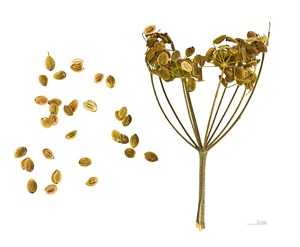
|
Pastinaca sativa |
https://en.wikipedia.org/wiki/Parsnip
true
Moist
Full sun, Partial sun/shade
4-8
Wild parsnip
Light (sandy), Medium, Heavy (clay)
Apiaceae or umbelliferae
1.0
Pastinake
Roots
Leaves, Root, Seed, Shoots
Weed potential
Biennial
https://pfaf.org/User/Plant.aspx?LatinName=Pastinaca sativa
Sicilia
Albania, Altay, Austria, Baltic States, Belarus, Belgium, Bulgaria, Central European Rus, Corse, Czechoslovakia, East European Russia, France, Germany, Great Britain, Greece, Hungary, Italy, Krasnoyarsk, Krym, Lebanon-Syria, Mongolia, Netherlands, North Caucasus, Poland, Romania, Sardegna, South European Russi, Spain, Switzerland, Transcaucasus, Turkey, Turkey-in-Europe, Ukraine, West Siberia, Yugoslavia
https://powo.science.kew.org/taxon/urn:lsid:ipni.org:names:845768-1
0.4
Condiment
Pest control
|
Show
Edit |
|

|
Kale |
5-10
Full sun, Partial sun/shade
Moist
Light (sandy), Medium, Heavy (clay)
6.0-6.8
Deciduous
0.9
Biennial, Perennial
Herbs
Fast
45cm
Seed - direct sow, Seed - transplant
At last frost date
4-6 weeks before last frost
7-10 days
3 to 7 years
Dynamic accumulator
true
Shoots
Brassicaceae, Cruciferae
True
https://en.wikipedia.org/wiki/Kale
https://pfaf.org/User/Plant.aspx?LatinName=Brassica oleracea acephala
Shallow
0.5 cm
60
|
Kale (/keɪl/) is a hardy, leafy green vegetable that is a member of the Brassica oleracea species. It is native to the eastern Mediterranean and Asia Minor, and has been cultivated for food for over 2000 years. Kale plants typically have green or purple leaves that are deeply lobed and can grow up to 2 feet in length. The leaves are attached to a central stem and don't make a head, and the plant produces small, yellow flowers. Kales are considered to be closer to wild cabbage than most of the many domesticated forms of Brassica oleracea. In terms of growing conditions, kale prefers cool weather and does well in full sun to partial shade. It can be grown year-round in mild climates, but in colder climates it is best grown in the fall and early spring. To cultivate kale successfully, it is important to provide the plants with plenty of moisture and to regularly fertilize them. Kale is also a good companion plant for other vegetables, as it can help to deter pests and improve the health of the soil. In terms of edibility, kale is highly nutritious and can be eaten raw or cooked. The leaves and stems are both edible, and the plant can be stored in the refrigerator for several days after harvest. Kale can be used in a variety of dishes, including soups, salads, and smoothies. It can also be cooked and served as a side dish, or used as a garnish. In addition to its culinary uses, kale has a number of other uses. It is often used as a cover crop, as it can help to improve the fertility of the soil. Kale leaves can also be used as a mulch, as they break down readily and release nutrients into the soil. Additionally, kale plants can be used for wind protection, as their large leaves and sturdy stems can provide a barrier to wind. ### Links [Kale @ West Coast Seeds](https://www.westcoastseeds.com/blogs/how-to-grow/grow-kale-collards) |
Show
Edit |

|
Brussel Sprouts |
Full sun, Partial sun/shade
Moist
Light (sandy), Medium, Heavy (clay)
1.2
0.2
Biennial
3 to 7 years
true
Leaves
Rosenkohl
Brassicaceae or cruciferae
https://pfaf.org/User/Plant.aspx?LatinName=Brassica oleracea gemmifera
|
A leaf vegetable in the cabbage family. |
Show
Edit |

|
Cauliflower |
3-10
Full sun, Partial sun/shade
Moist
Light (sandy), Medium, Heavy (clay)
0.8
Annual, Biennial
3-7 years
Companion, antifungal, Dynamic accumulator
true
Flowers, Leaves
Blumenkohl
Brassicaceae or cruciferae
https://pfaf.org/User/Plant.aspx?LatinName=Brassica oleracea botrytis
|
Annual plant reproduced by seed. |
Show
Edit |

|
Savoy cabbage |
7-11
Full sun, Partial sun/shade
Moist
Light (sandy), Medium, Heavy (clay)
0.8
Annual, Biennial
3 to 7 years
Dynamic accumulator
true
Leaves
Wirsing
Brassicaceae or cruciferae
https://pfaf.org/User/Plant.aspx?LatinName=Brassica oleracea sabauda
|
Savoy cabbage is a winter vegetable. The leaves can be eaten. |
Show
Edit |
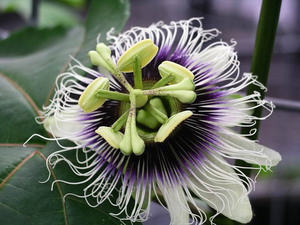
|
Passiflora edulis |
https://en.wikipedia.org/wiki/Passiflora_edulis
true
Fast
Moist
Full sun
9-12
Vines
Purple granadilla, passion fruit, granadilla, aul aanp, bai xiang guo, buah negeri, buah susu, garendal, granadiglia, granadilho, grenadille, ji dan guo, kudamonotokeiso, liliko'i, linmangkon, louki, magalendendele, maracuja-roxo, maracuya, markisa, maseche, matunda, munchi, obutunda, pasionaria, purpurgrenadille, qaranidila, sawarot, soh-brap, tikeiso, common passionfruit, fleur de la passion, flor de la pasión, granadiglia incarnata, granadilla, grenadella, kalala, maracayú, maracujá, maracujá azedo, maracujá-comum, maracujá-de-comer, maracujá-de-ponche, maracujá-do-mato, maracujá-doce, maracujá-mirim, maracujá-peroba, maracujá-preto, maracujá-redondo, maracuya, pasiflora, passiflora, passiflorae acetum folium, passiflore, passion flower, passion fruit, passion fruit|wel dodam, passionsblume, passionsfrukt, purple granadilla, purple passionflower
Light (sandy), Medium, Heavy (clay)
Passifloraceae
9.0
Oil, Drink, Sweetener
Weed potential
Fruit
Perennial
https://pfaf.org/User/Plant.aspx?LatinName=Passiflora edulis
Argentina Northeast, Brazil Northeast, Brazil South, Brazil Southeast, Brazil West-Central, Paraguay
Angola, Argentina Northwest, Assam, Azores, Bangladesh, Benin, Bolivia, Borneo, Brazil North, Burundi, Cambodia, Cameroon, Canary Is., Caroline Is., Central African Repu, China South-Central, China Southeast, Colombia, Comoros, Cook Is., Costa Rica, Cuba, Dominican Republic, East Himalaya, El Salvador, Ethiopia, Fiji, Florida, Gabon, Galápagos, Gambia, Gilbert Is., Guatemala, Gulf of Guinea Is., Hawaii, Honduras, India, Jamaica, Jawa, Kenya, KwaZulu-Natal, Laos, Leeward Is., Lesser Sunda Is., Malawi, Malaya, Marianas, Marshall Is., Mauritius, Mexico Central, Mexico Northeast, Mexico Southeast, Mexico Southwest, Morocco, Mozambique, New Caledonia, New South Wales, New Zealand North, Norfolk Is., Northern Provinces, Panamá, Peru, Puerto Rico, Queensland, Rodrigues, Réunion, Sri Lanka, Sudan, Swaziland, Taiwan, Tanzania, Thailand, Tonga, Trinidad-Tobago, Uganda, Venezuela, Victoria, Vietnam, West Himalaya, Windward Is., Zambia, Zaïre, Zimbabwe
https://powo.science.kew.org/taxon/urn:lsid:ipni.org:names:321964-2
Fencing, oil, Fragrance
|
Show
Edit |
|
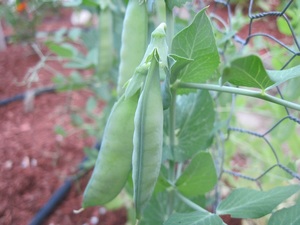
|
Pea |
3-9
Annual
Full sun
Moist
Light (sandy), Medium
2.0
Vines
Nitrogen fixer
true
Leaves, Seed, Shoots
https://en.wikipedia.org/wiki/Pea
Fabaceae or leguminosae
Erbse
https://pfaf.org/User/Plant.aspx?LatinName=Pisum sativum
Afghanistan, Albania, Algeria, Bulgaria, Corse, Cyprus, Egypt, France, Greece, Iran, Iraq, Italy, Krym, Lebanon-Syria, Libya, Morocco, North Caucasus, Palestine, Portugal, Romania, Sardegna, Sicilia, Spain, Transcaucasus, Tunisia, Turkey, Turkey-in-Europe, Turkmenistan, Ukraine, Yugoslavia
Alabama, Altay, Amur, Andaman Is., Assam, Austria, Baltic States, Bangladesh, Belarus, Belgium, Buryatiya, California, Canary Is., Cayman Is., Central European Rus, China North-Central, China South-Central, Chita, Colombia, Costa Rica, Cuba, Czechoslovakia, Dominican Republic, East Aegean Is., East European Russia, East Himalaya, Ethiopia, Fiji, Haiti, Idaho, Illinois, India, Irkutsk, Kamchatka, Kazakhstan, Kenya, Khabarovsk, Kirgizstan, Korea, Krasnoyarsk, Laos, Madeira, Magadan, Marianas, Maryland, Mexico Southwest, Mongolia, Mozambique, Myanmar, Nepal, New Guinea, New South Wales, New York, New Zealand North, New Zealand South, Nigeria, North European Russi, Northwest European R, Oregon, Pakistan, Primorye, Puerto Rico, Rwanda, Sakhalin, South Australia, South European Russi, South Georgia, Sri Lanka, Tadzhikistan, Tibet, Trinidad-Tobago, Tuva, Uganda, Uzbekistan, Vermont, Vietnam, Washington, West Himalaya, West Siberia, Yakutskiya, Yemen
Lathyrus oleraceus
https://powo.science.kew.org/taxon/urn:lsid:ipni.org:names:501912-1
3-5 years
0.3
https://powo.science.kew.org/taxon/urn:lsid:ipni.org:names:60454055-2
|
Peas are a type of legume, native to western Asia and the Near East. They are an annual plant, meaning they grow, flower, and produce seeds within a single growing season. Peas have tendrils that allow them to climb, and their leaves are typically made up of two oblong leaflets and a tendril on a single petiole. Peas produce clusters of small, fragrant flowers that can be white, pink, or purple in color. The flowers give way to pod-like fruits that contain the peas. Peas are a cool-season crop, and prefer to grow in well-drained soil that is high in organic matter. They can tolerate some shade, but will produce the best yields when grown in full sun. Peas can be differentiated from similar plants by their tendrils and the clusters of small, fragrant flowers that they produce. Peas are a relatively small plant, typically growing to a height of one to two feet. They can be grown in rows or as a companion plant, and will typically take between 60 and 90 days to reach maturity. Peas are not winter hardy, and should be planted in the spring as soon as the soil can be worked. Peas are edible, and the seeds inside the pods can be eaten fresh or dried for storage. The leaves and stems of the pea plant can also be eaten, and are a good source of vitamins and minerals. Peas can be used in a variety of dishes, and are a common ingredient in soups, stews, and casseroles. In addition to their culinary uses, peas are also valued for their ability to fix nitrogen in the soil. This makes them a valuable crop for improving soil fertility, and they are often grown as a cover crop or rotated with other crops to improve the overall health of the soil. Peas are also valued by wildlife, and their flowers and seeds are a favorite food for birds and other animals. |
Show
Edit |

|
Broccoli |
2-11
Full sun, Partial sun/shade
Moist
Light (sandy), Medium, Heavy (clay)
6.0-7.0
0.9
Annual, Biennial
45cm
6-8 weeks before last frost
7-10 days
4°C (40°F)
50-100
3 to 7 years
Companion
true
Flowers, Leaves, Shoots
Brokkoli
Brassicaceae or Cruciferae
https://pfaf.org/User/Plant.aspx?LatinName=Brassica oleracea italica
|
Broccoli is a plant that is native to the Mediterranean region. It is part of the Brassica oleracea family, which also includes other vegetables such as cauliflower and cabbage. Broccoli plants have green, flowering heads that are similar in appearance to cauliflower. The stems are typically thick and can grow to be quite large, depending on the variety of broccoli. The leaves of the plant are typically dark green and are arranged in a spiral pattern along the stem. When it comes to growing conditions, broccoli prefers cool weather and well-draining soil. It is a relatively fast-growing plant, with the flowering heads typically forming in the first year. To cultivate broccoli successfully, a grower will need to make sure the plant gets enough water and sunlight, and provide it with the necessary nutrients through fertilization. In terms of winter hardiness, broccoli is not very frost-tolerant, so it is typically grown as a cool-season crop in areas with mild winters. In terms of edibility, broccoli is a very nutritious vegetable that is packed with vitamins and minerals. The flowering heads and the stems are both edible, and can be cooked in a variety of ways. After harvest, broccoli can be stored in the refrigerator for several days, or frozen for longer-term storage. ### Propagation - Direct sow Sow seeds 7cm apart, thin when seedlings reach 5-7cm in height. ### Propagation - Transplant Start seeds 6-8 weeks before your last frost date, or 2-3 weeks before last frost date. Plant outside when seedlings are 4-6 weeks old, or have 4-5 leaves. #### Links [Broccoli @ Almanac](https://www.almanac.com/plant/broccoli) |
Show
Edit |
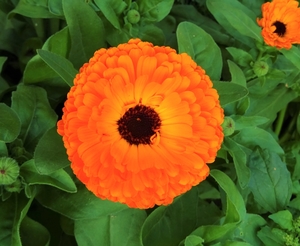
|
Pot marigold |
2-11
Full sun, Partial sun/shade
Moist
Light (sandy), Medium, Heavy (clay)
5.5-7.0
0.6
0.3
Annual
Medium
15cm
6-14 days
21°c (70°f)
60
Compost, Cosmetic, Dye, Essential Oil, Weather forecasting, Dynamic accumulator, Fragrance
Flowers, Leaves
Calendula, Common marigold, Scotch marigold, Ruddles
Ringelblume
Asteraceae or compositae
Spain
Afghanistan, Albania, Argentina Northeast, Argentina Northwest, Argentina South, Assam, Austria, Azores, Baleares, Baltic States, Belarus, Belgium, Bolivia, Borneo, British Columbia, Bulgaria, California, Canary Is., Central European Rus, Chatham Is., Chile Central, Chile North, Chile South, China North-Central, China South-Central, China Southeast, Colombia, Connecticut, Cook Is., Corse, Costa Rica, Cyprus, Czechoslovakia, East Aegean Is., East European Russia, East Himalaya, Ecuador, Ethiopia, France, Germany, Great Britain, Greece, Guatemala, Hainan, Honduras, Hungary, India, Iraq, Ireland, Italy, Jawa, Juan Fernández Is., Kazakhstan, Kriti, Krym, Lebanon-Syria, Lesser Sunda Is., Libya, Madeira, Maine, Malaya, Manchuria, Massachusetts, Mauritius, Mexico Southeast, Michigan, Morocco, Myanmar, Nepal, Netherlands, New Hampshire, New South Wales, New York, New Zealand North, New Zealand South, Newfoundland, North Caucasus, North European Russi, Northern Territory, Northwest European R, Norway, Nova Scotia, Ohio, Ontario, Pakistan, Paraguay, Pennsylvania, Peru, Philippines, Poland, Portugal, Primorye, Qinghai, Queensland, Québec, Romania, Sardegna, Sicilia, South Australia, South European Russi, Sulawesi, Sumatera, Sweden, Switzerland, Tadzhikistan, Taiwan, Tasmania, Tibet, Transcaucasus, Trinidad-Tobago, Turkey, Turkmenistan, Ukraine, Uruguay, Uzbekistan, Victoria, Vietnam, Washington, Western Australia, Wisconsin, Xinjiang, Yugoslavia
https://en.wikipedia.org/wiki/Calendula_officinalis
https://pfaf.org/User/Plant.aspx?LatinName=Calendula officinalis
https://powo.science.kew.org/taxon/urn:lsid:ipni.org:names:187894-1
4.6
Colouring, Tea
true
|
The pot marigold, also known as Calendula officinalis, is a flowering plant probably native to southwestern Asia, western Europe, and the Mediterranean region, however, its long cultivation history makes its precise origin unknown. It is a herbaceous annual plant that typically grows to be about 12-18 inches tall, with hairy stems and leaves. The leaves are lance-shaped, with a hairy surface, and the flowers can range in colour from white through yellow and orange to red and even pink. In terms of growing conditions, the pot marigold prefers well-drained soil and full sun, although it can tolerate partial shade. It is winter hardy, but may not flower as profusely in colder climates. To cultivate it successfully, a grower should plant pot marigold seeds directly in the ground after the last frost of the season. The pot marigold has a number of uses, both culinary and medicinal. The flowers are edible and can be used to add color and flavor to salads and other dishes. The petals can also be dried and used to make tea. In terms of medicinal uses, the plant has been used for centuries to treat a variety of ailments, including wounds, infections, and skin irritation. The pot marigold is also attractive to a variety of pollinators, making it a valuable plant for attracting beneficial insects to the garden. Overall, the pot marigold is a versatile and easy-to-grow plant that is well-suited to a variety of garden settings. ### Propagation - Direct sow Direct sow in spring when light frost is still possible. Can be sown until early summer for fall blooms. ### Propagation - Transplant Sow indoors in late winter, transplant outside when risk of heavy frost has passed. #### Links [Calendula @ West Coast Seeds](https://www.westcoastseeds.com/products/zeolights-organic) |
Show
Edit |

|
Garlic |
3-10
Perennial
Full sun
Dry, Moist
Light (sandy), Medium
0.6
Herbs
Flowers, Leaves, Root, Seed
Seed - direct sow
https://en.wikipedia.org/wiki/Garlic
Cultivated garlic
Alliaceae
Knoblauch
20cm
https://pfaf.org/User/Plant.aspx?LatinName=Allium sativum
6.5-7.0
Sting and itch relief from insect bites
Fibrous
Shallow
100-150
Allium
Iran, Kazakhstan, Kirgizstan, Tadzhikistan, Turkmenistan, Uzbekistan
Albania, Algeria, Amur, Austria, Baleares, Baltic States, Bangladesh, Belarus, Bulgaria, Cambodia, Canary Is., Central European Rus, China North-Central, China South-Central, China Southeast, Corse, Cuba, Czechoslovakia, Dominican Republic, East European Russia, Egypt, Ethiopia, France, Galápagos, Germany, Greece, Haiti, Hungary, Illinois, India, Iraq, Italy, Jamaica, Kentucky, Korea, Leeward Is., Libya, Mexico Central, Mexico Northwest, Mexico Southeast, Mexico Southwest, Morocco, New York, North European Russi, Northwest European R, Pakistan, Poland, Primorye, Puerto Rico, Romania, Sardegna, Seychelles, Sicilia, South European Russi, Spain, Switzerland, Tennessee, Thailand, Trinidad-Tobago, Tunisia, Turkey, Ukraine, Vermont, Wisconsin, Yugoslavia
Late autumn, Early spring
https://powo.science.kew.org/taxon/urn:lsid:ipni.org:names:528796-1
Adhesive, antifungal, Dynamic accumulator
true
|
Garlic (Allium sativum) is a bulbous perennial plant in the family Amaryllidaceae. It is native to central Asia and northeastern Iran, and has long been a staple in cuisines around the world. The plant has a distinctive appearance, with narrow, long leaves and a tall, hollow stem. The leaves are a pale green color and are attached to the stem in a spiral arrangement. The flowers are small and white, and are clustered in a spherical head at the top of the stem. Garlic plants can grow to a height of 30-150 cm (12-59 in), depending on the variety. They are relatively fast-growing plants, with the bulbs maturing in about seven months. Mulch for proper overwintering when planted in autumn. Garlic can be differentiated from other plants in the Allium genus by its distinctive flavor and aroma. It is also often distinguished by its long, narrow leaves and tall, hollow stem. Garlic prefers well-drained soil and full sun, and is typically grown from bulbs. To cultivate garlic successfully, growers should plant the bulbs in the fall, about 6-8 weeks before the first frost. The bulbs should be spaced about 10-15 cm (4-6 in) apart, with the pointed end facing up. After planting, the bulbs should be watered regularly and mulched to protect them from cold temperatures. Garlic is edible, with the bulbs and leaves being the most commonly eaten parts of the plant. The bulbs can be used fresh or cooked, and are often used as a seasoning in a wide variety of dishes. The leaves can be used fresh or cooked, and have a milder flavor than the bulbs. To harvest dig and do not pull out the bulbs. Let them dry in an airy, shady and dry spot e.g. by hanging them up. Once wrappers are dry, it can be stored at a dry place for several months. In addition to its culinary uses, garlic has a number of other uses. It is commonly used medicinally, as it has been shown to have antimicrobial and anti-inflammatory properties. It is also sometimes used as a natural insect repellent. In the garden, it can be used as a natural fertilizer, as it is believed to improve the soil and help deter pests. Garlic has value for wildlife, as it is attractive to a wide variety of pollinators, including bees, butterflies, and hummingbirds. It is also a food source for animals such as rabbits and deer. |
Show
Edit |
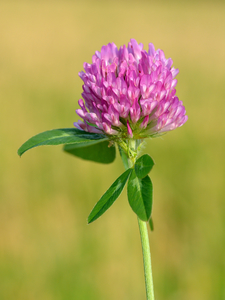
|
Trifolium pratense |
5-9
Perennial
Full sun
Moist
Light (sandy), Medium, Heavy (clay)
0.6
Herbs
true
Flowers, Leaves, Root, Seed
https://en.wikipedia.org/wiki/Trifolium_pratense
Medium
Fabaceae or leguminosae
Roter klee
https://pfaf.org/User/Plant.aspx?LatinName=Trifolium pratense
Afghanistan, Albania, Algeria, Altay, Austria, Azores, Baltic States, Belarus, Belgium, Bulgaria, Buryatiya, Canary Is., Central European Rus, Corse, Czechoslovakia, Denmark, East European Russia, East Himalaya, Finland, France, Føroyar, Germany, Great Britain, Greece, Hungary, India, Iran, Iraq, Ireland, Irkutsk, Italy, Kazakhstan, Kirgizstan, Krasnoyarsk, Krym, Madeira, Mongolia, Morocco, Nepal, Netherlands, North Caucasus, North European Russi, Northwest European R, Norway, Pakistan, Poland, Portugal, Romania, Sardegna, Sicilia, South European Russi, Spain, Sweden, Switzerland, Tadzhikistan, Transcaucasus, Tunisia, Turkey-in-Europe, Turkmenistan, Tuva, Ukraine, Uzbekistan, West Himalaya, West Siberia, Xinjiang, Yugoslavia
Alabama, Aleutian Is., Amur, Antipodean Is., Argentina Northeast, Argentina South, Bahamas, Bermuda, Bolivia, Brazil South, California, Cape Provinces, Chatham Is., Chile Central, Chile South, China North-Central, China South-Central, China Southeast, Chita, Colombia, Colorado, Costa Rica, Cuba, Dominican Republic, Ecuador, Eritrea, Ethiopia, Falkland Is., Guatemala, Hawaii, Iceland, Idaho, Illinois, Japan, Jawa, Kamchatka, Kentucky, Kermadec Is., Khabarovsk, Korea, Kuril Is., KwaZulu-Natal, Labrador, Magadan, Manchuria, Maryland, Mexico Southwest, Minnesota, Nansei-shoto, Nevada, New Mexico, New South Wales, New York, New Zealand North, New Zealand South, Newfoundland, Northern Provinces, Oregon, Peru, Primorye, Puerto Rico, Queensland, Sakhalin, South Australia, Sri Lanka, Taiwan, Tasmania, Tennessee, Turkey, Uruguay, Venezuela, Vermont, Victoria, Washington, Western Australia, Wisconsin, Yakutskiya
https://powo.science.kew.org/taxon/urn:lsid:ipni.org:names:523575-1
Condiment, Tea
Dye, Cover crop, Soil reclamation, Dynamic accumulator, Nitrogen fixer
|
Red clover is a flowering plant native to Europe, Western Asia, and Northwest Africa. It typically grows to about 1-2 feet tall and has trifoliate leaves with a characteristic white or pinkish "V" shape at the base. The flowers are typically a deep pink color and are arranged in compact, spherical clusters. Red clover prefers well-drained, fertile soil and a temperate climate. It can be grown as a perennial in cooler climates, but is often grown as an annual in warmer climates. To cultivate red clover successfully, a grower will need to ensure that the soil is adequately prepared, with adequate moisture and nutrients. Red clover is winter hardy and can tolerate frost. It can be grown as a cover crop to help improve soil fertility and structure, and is often used as a natural source of nitrogen for other crops. It is also used as a source of food for grazing animals. The edible parts of red clover include the leaves and flowers, which can be eaten raw or cooked. The leaves can be stored by drying or freezing, while the flowers can be stored by drying or preserving in syrup. Red clover has a number of medicinal uses, including the treatment of coughs and colds, as well as being used as a natural estrogen replacement. It is also used to improve skin health and as a natural diuretic. Red clover is a valuable plant for wildlife, providing nectar for pollinators such as bees, as well as being a food source for other animals. It is also used by some bird species for nesting material. |
Show
Edit |

|
Raphanus sativus |
2-11
Full sun, Partial sun/shade
Moist
Light (sandy), Medium, Heavy (clay)
0.5
0.3
Annual
Roots
Fast
true
Flowers, Leaves, Root, Seed, Seedpod
Oil
Cultivated radish
Rettich
Brassicaceae or cruciferae
Greece, Italy, Sicilia, Yugoslavia
Alabama, Alaska, Algeria, Altay, Andaman Is., Angola, Argentina Northeast, Argentina Northwest, Argentina South, Arizona, Arkansas, Assam, Baleares, Baltic States, Bangladesh, Belarus, Belgium, Bermuda, Bolivia, Brazil South, Brazil Southeast, British Columbia, Bulgaria, California, Canary Is., Caroline Is., Central European Rus, Chile Central, Chile North, Chile South, China North-Central, China South-Central, China Southeast, Colombia, Colorado, Connecticut, Corse, Costa Rica, Cuba, Cyprus, Delaware, District of Columbia, Dominican Republic, East Aegean Is., East European Russia, East Himalaya, Ecuador, Egypt, El Salvador, Eritrea, Ethiopia, Fiji, Florida, Galápagos, Georgia, Gilbert Is., Guatemala, Gulf of Guinea Is., Gulf States, Hainan, Haiti, Hawaii, Idaho, Illinois, India, Indiana, Inner Mongolia, Iowa, Iraq, Japan, Jawa, Kansas, Kazakhstan, Kazan-retto, Kenya, Korea, Kriti, Krym, Kuwait, Labrador, Lebanon-Syria, Leeward Is., Libya, Louisiana, Madeira, Maine, Manchuria, Manitoba, Marianas, Marshall Is., Maryland, Massachusetts, Mauritania, Mexican Pacific Is., Mexico Northwest, Michigan, Minnesota, Mississippi, Missouri, Montana, Morocco, Nansei-shoto, Nebraska, Nepal, Nevada, New Brunswick, New Caledonia, New Hampshire, New Jersey, New Mexico, New South Wales, New York, Newfoundland, Nicobar Is., North Carolina, North Dakota, North European Russi, Northern Provinces, Nova Scotia, Ohio, Oklahoma, Oman, Ontario, Oregon, Pakistan, Palestine, Paraguay, Pennsylvania, Portugal, Primorye, Prince Edward I., Puerto Rico, Qinghai, Queensland, Québec, Rhode I., Rwanda, Sardegna, Saskatchewan, Saudi Arabia, South Australia, South Carolina, South Dakota, South European Russi, Spain, Sri Lanka, Sudan, Sumatera, Switzerland, Tadzhikistan, Tanzania, Tasmania, Texas, Tibet, Tunisia, Turkey, Turkey-in-Europe, Turkmenistan, Ukraine, Uruguay, Utah, Uzbekistan, Victoria, Vietnam, Virginia, Wake I., Washington, West Himalaya, West Virginia, Western Australia, Windward Is., Wisconsin, Wyoming, Xinjiang, Yemen, Zimbabwe
https://en.wikipedia.org/wiki/Radish
https://pfaf.org/User/Plant.aspx?LatinName=Raphanus sativus
https://powo.science.kew.org/taxon/urn:lsid:ipni.org:names:77159305-1
Weed potential
Animal feed, Cover crop, oil
|
The radish, also known as Raphanus sativus, is a plant native to southwestern Asia and the eastern Mediterranean region. It is a cool-season annual that grows quickly, often maturing in just a few weeks. The radish has a distinctive round or oblong shape, with a crisp and juicy texture. Its skin is typically red or white, but can also be purple, yellow, or black. The leaves of the radish are elongated and dark green in color, while its flowers are small and white or yellow in color. Radishes are relatively small, typically growing to be about four inches long and two inches wide. They prefer well-drained soil that is high in organic matter, and can be grown in a variety of climates, including temperate and subtropical regions. Radishes are typically differentiated from similar plants, such as turnips, by their smaller size and more pungent flavor. They can be harvested at any stage of their growth, but are typically harvested when they are young and tender for the best flavor. To cultivate radishes successfully, a grower will need to plant them in well-prepared soil, water them regularly, and thin out the plants to prevent overcrowding. Radishes are generally hardy and can tolerate frost, making them a good choice for a fall or winter garden. The edible parts of the radish plant are the root and the leaves. The root can be eaten raw, cooked, or pickled, while the leaves can be used in salads or cooked like other leafy greens. After harvest, the roots can be stored in a cool and dark place, such as a root cellar, to prolong their shelf life. Radishes have a number of uses, both in the garden and beyond. In the garden, they can be used as a companion plant to deter pests and improve the health of other plants. In addition to their use in cooking, radishes have also been used medicinally, with some evidence suggesting that they may have anti-inflammatory and digestive health benefits. Radishes are also a valuable food source for wildlife, providing a source of nutrition for birds and small mammals. They are a popular food for bees and other pollinators, and can help to attract these beneficial insects to the garden. |
Show
Edit |

|
Allium cepa |
3-9
Annual
Full sun
Moist
Light (sandy), Medium
0.6
Herbs
Flowers, Leaves, Root, Seed
Seed - direct sow, Seed - transplant
https://en.wikipedia.org/wiki/Onion
Garden onion
Alliaceae
Zwiebel
https://pfaf.org/User/Plant.aspx?LatinName=Allium cepa
50°f, 10°c
Seed indoors 6 weeks before transplanting in the garden
2-6 inches
6.0-7.0
Allium
Turkmenistan
Algeria, Argentina Northeast, Arkansas, Baltic States, Bangladesh, Belarus, Bulgaria, California, Cambodia, Canary Is., Central European Rus, China North-Central, China South-Central, China Southeast, Colombia, Cuba, Czechoslovakia, Dominican Republic, East Aegean Is., East European Russia, East Himalaya, Ecuador, Egypt, Ethiopia, Fiji, France, Galápagos, Guinea-Bissau, Haiti, Illinois, India, Iraq, Italy, Jamaica, Kansas, Kentucky, Kirgizstan, Korea, Krym, Libya, Louisiana, Madeira, Manchuria, Mauritania, Mexico Central, Mexico Gulf, Mexico Northeast, Mexico Southeast, Mexico Southwest, Minnesota, Montana, Morocco, New York, Niue, North European Russi, Northwest European R, Oregon, Pakistan, Puerto Rico, Seychelles, South European Russi, Spain, Tadzhikistan, Texas, Thailand, Tibet, Tonga, Trinidad-Tobago, Ukraine, Uzbekistan, Vermont, Washington, West Himalaya, West Siberia, Wisconsin, Xinjiang, Yugoslavia
Spring or fall
0.3
https://powo.science.kew.org/taxon/urn:lsid:ipni.org:names:527795-1
Cosmetic, Dye, Hair, Polish, Rust
true
|
Onion (Allium cepa) is a plant species in the family Amaryllidaceae. It is native to central Asia and is commonly grown as a vegetable in many parts of the world. Onions are biennial plants, meaning they typically have a two-year life cycle. In the first year, the onion forms a small, rounded bulb with thin, papery skin. In the second year, the onion will produce a tall stem with hollow, elongated leaves and a small, spherical flower head. Onions are typically grown for their bulbs, which are used as a food ingredient in many dishes. The bulbs can vary in size and shape, depending on the variety, but are generally spherical or oblong in shape and range in size from about 2-4 inches in diameter. Onions are commonly differentiated by their color, which can range from white to yellow to red. Onions prefer well-drained soil that is rich in organic matter. They should be planted in a sunny location and will benefit from regular watering, especially during dry periods. Onion bulbs can be harvested when they reach the desired size, typically after about 100-150 days of growth. To store onions, they should be dried and cured in a cool, dry place for about two weeks before being placed in a mesh bag or other breathable container. Onions are edible and are commonly used as a food ingredient in many dishes. The bulbs are the most commonly used part of the plant, but the leaves and stems can also be used in cooking. Onions have a pungent, spicy flavor and are often used to add flavor to soups, stews, and other dishes. Onions can be stored for several months if properly dried and cured. In addition to their use as a food ingredient, onions have also been used for their medicinal properties. They have been used to treat a variety of ailments, including coughs, colds, and respiratory infections. Onions are also sometimes used as a natural fertilizer, due to the high levels of sulfur and other nutrients they contain. Onions are not known to provide significant value to wildlife. They are not a preferred food source for most animals and do not provide any significant habitat value. However, some insects, such as the onion maggot, can be pests of onion crops. |
Show
Edit |
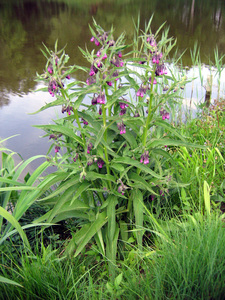
|
Comfrey |
3-9
Perennial
Full sun, Partial sun/shade
Moist
Light (sandy), Medium, Heavy (clay)
1.2
Herbs
true
Leaves, Shoots
https://en.wikipedia.org/wiki/Symphytum_officinale
Fast
Common comfrey, Comfrey, Symphytum
Boraginaceae
https://pfaf.org/User/Plant.aspx?LatinName=Symphytum officinale
Gewone smeerwortel
Lægekulsukker
Altay, Austria, Belarus, Belgium, Bulgaria, Central European Rus, Czechoslovakia, East European Russia, France, Germany, Great Britain, Hungary, Italy, Kazakhstan, Krym, Netherlands, North Caucasus, Northwest European R, Poland, Romania, Sardegna, Sicilia, South European Russi, Spain, Switzerland, Turkey, Turkey-in-Europe, Ukraine, West Siberia, Yugoslavia
Alberta, Argentina Northeast, Arkansas, Baltic States, Brazil West-Central, British Columbia, California, China North-Central, China Southeast, Chita, Colorado, Connecticut, Delaware, Denmark, District of Columbia, Dominican Republic, Finland, Georgia, Haiti, Idaho, Illinois, Indiana, Ireland, Kentucky, Korea, Maine, Manchuria, Manitoba, Maryland, Massachusetts, Michigan, Minnesota, Missouri, Montana, New Brunswick, New Hampshire, New Jersey, New Mexico, New York, Newfoundland, North Carolina, North European Russi, Norway, Nova Scotia, Ohio, Ontario, Oregon, Pennsylvania, Primorye, Québec, Rhode I., Saskatchewan, Sweden, Taiwan, Tasmania, Utah, Vermont, Vietnam, Virginia, Washington, West Virginia, Wisconsin, Wyoming, Xinjiang
Beinwell, Wallwurz, Beinwurz
60cm
https://powo.science.kew.org/taxon/urn:lsid:ipni.org:names:120815-1
Gum, Tea
Biomass, Compost, Gum, Dynamic accumulator
|
Comfrey (Symphytum officinale) is a perennial plant that is native to Europe and Asia. It belongs to the family Boraginaceae, which includes around 300 species of plants. Comfrey is a popular garden plant, known for its large, hairy leaves and bell-shaped, white or purple flowers. The plant has a sprawling growth habit and can reach a height of up to 3-4 feet. The leaves are large, oval-shaped, and covered in fine hairs, and the flowers are clustered in elongated spikes at the ends of the stems. To grow comfrey successfully, it is important to choose a location with well-drained, fertile soil and full sun or partial shade. The plant is tolerant of a wide range of soil conditions, but prefers moist, slightly acidic soil. Comfrey can also be grown in containers, and will benefit from regular watering and fertilization. The plant is relatively easy to grow and requires little maintenance, but can be susceptible to pests and diseases, such as slugs and fungal infections. Comfrey is not edible, and the leaves and roots of the plant contain toxic compounds that can cause irritation and allergic reactions in some people. However, the plant has a number of other uses, including medicinal and horticultural applications. The leaves and roots of the plant are high in nutrients, and are often used as a natural fertilizer for plants. The leaves can also be used to make a medicinal tea, and have been used to treat a variety of ailments, including wounds, bruises, and respiratory disorders. Comfrey is also a valuable food source for many types of wildlife, including bees, butterflies, and other pollinators. The flowers attract a wide range of insects, and the leaves and roots are eaten by animals such as rabbits and deer. The plant can spread rapidly and is considered invasive in some areas. |
Show
Edit |
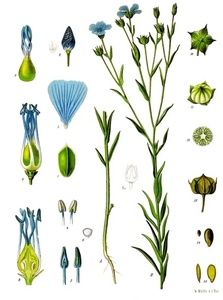
|
Flax |
4-8
Annual
Full sun
Moist
Light (sandy), Medium
0.7
true
Seed
https://en.wikipedia.org/wiki/Flax
Common flax
Linaceae
Sommerlein, lein
Oil, Coffee, Gum
https://pfaf.org/User/Plant.aspx?LatinName=Linum usitatissimum
6
Manitoba, Turkey
Iran, Kazakhstan, Kirgizstan, North Caucasus, Tadzhikistan
https://powo.science.kew.org/taxon/urn:lsid:ipni.org:names:267411-1
Biomass, Fiber, Gum, textiles, oil, Dynamic accumulator
|
Flax, also known as Linum usitatissimum, is a plant native to the Mediterranean region. It is a slender annual plant that grows to about 1-2 feet tall and has slender, branching stems. The leaves are narrow and lanceolate, and the flowers are small and pale blue. Flax is a fast-growing plant that prefers well-drained, moist soil and full sun. It is not winter hardy and should be planted in the spring. To cultivate flax successfully, a grower should keep the soil moist and weed-free, and provide the plant with plenty of sunlight. Flax is not typically grown for its edible parts, but the seeds can be ground into a meal or flour and used in baking. The plant's fibers, on the other hand, are used to make linen fabric. To harvest the fibers, the stems are soaked in water to loosen the fibers, which are then pulled out by hand or with a tool. Flax has been used for centuries for its fibers, which are strong and durable. In addition to making fabric, flax fibers can also be used for weaving, building material, and other purposes. Flax is also valued for its medicinal properties and has been used to treat a variety of ailments. It is also a good source of nectar for bees and other pollinators. |
Show
Edit |